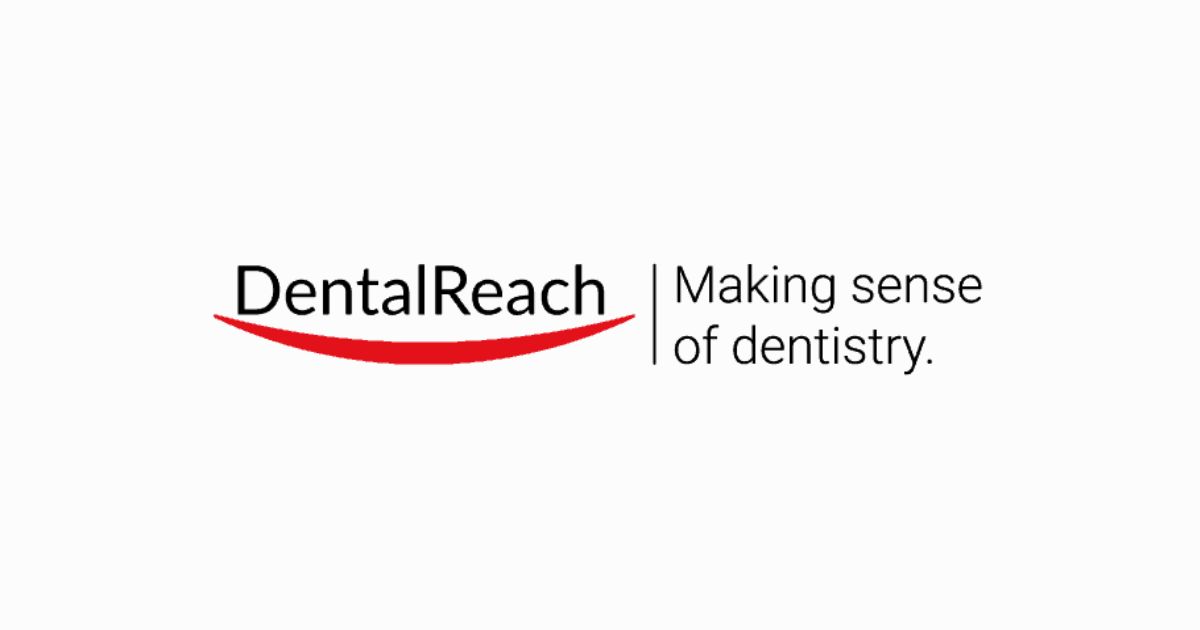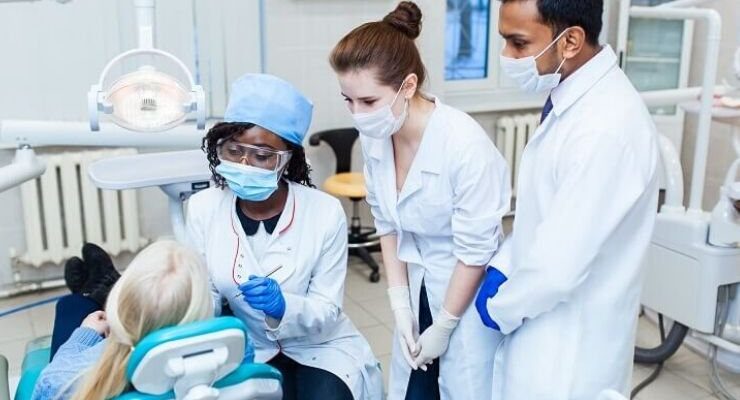Two dentists are delighted to return to work at a Huntington Park community clinic, providing a much-needed service for underprivileged and uninsured patients who often go without dental treatment.

Dentists, on the other hand, require dental assistants to set up rooms, take X-rays, and aid with equipment. South Central Family Health Center hasn’t been able to hire enough of them thus far.
According to David Roman, communications director for the centre, which has offices from South L.A. to Cudahy, this translates to more than 2,000 patients missing out on dental care they could have received.
“We can’t bring back two dentists” without three more assistants, Roman said. “And it’s not just us,” says the narrator.
As the pandemic has carried on in California, community clinics, which provide primary and preventative care to the poor and uninsured, have struggled to find and retain personnel.
Clinic employees claim that the shortages have caused patients to wait longer in waiting rooms and on the phone, impeded referrals to medical specialists, hampered preventive screenings, and increased employee burnout.
“We’ve been so short-staffed that every day feels like a marathon,” said José Alejandro Santana Lomeli, a physician assistant at Watsonville’s Salud Para La Gente clinic.
According to a poll by the California Primary Care Association, job turnover at such clinics reached over 20% last year. The vacancy rate for medical assistants reached 24 percent, virtually tripling from a year ago, and it quadrupled to 20 percent for dental assistants.
“Even receptionists and benefits counsellors are being snatched up by the major giants”—medical centres like Kaiser and UCLA—”that can pay much more than we can,” said Jim Mangia, CEO and president of St. John’s Community Health. “We can’t afford to pay what the market requires.”
According to federal data, medical assistants in California were making around $20 an hour at the start of the pandemic—roughly $43,000 annually—but web advertisements suggest that some competitors are now paying $25 an hour or more. According to the association poll, medical assistants in California community clinics earn an average of $40,000 to $42,000 per year, depending on certification.
The health-care industry isn’t the only one to compete with. “Our main competitors are Arby’s, Chick-Fil-A, and In-N-Out,” said Warren Brodine, president and CEO of Eisner Health, which operates clinics in downtown Los Angeles, the San Fernando Valley, and Lynwood.
Eisner clinics, according to Brodine, increased compensation, gave bonuses, expanded some benefits, and tried to offer remote employment whenever possible during the pandemic.
But, according to Brodine, “no one has worked out how to provide a paediatric vaccine via a Zoom call yet.”
Alisha Walker, a medical assistant in the Bay Area, enjoys her work as a medical assistant at a community clinic for persons in need of psychiatric care because “I get to serve the community that I live in.”
She recognises, though, that she could be making more money elsewhere. Walker quit a job at LifeLong Medical Care clinics for more pay at other health institutions years ago, then returned four years ago after becoming dissatisfied with her commute. She had been earning around $30 per hour before returning to $19 per hour, she added. She obtained a second job working the night shift at UPS to make up for the income cut.
“I had turned into a zombie. I was literally not sleeping at all. It was a shambles, “Walker remarked. “I’d definitely be doing it today,” she remarked, if she hadn’t damaged her knee lifting a hefty box.
To supplement her income, Watsonville medical assistant Santana Lomeli works a second job as an instructor at a medical assistant programme. In the evenings, his husband, who is also a medical assistant, drives for Lyft.
Before the pandemic, community clinics were already struggling financially, with expenditures outpacing earnings. Nonprofit clinics in California rely substantially on government support, including Medicaid, uninsured-patient programmes, and federal funds.
According to a financial audit by the NGO Capital Link, a fifth of California community health clinics had less than a month of cash on hand less than a year before COVID-19 arrived. COVID-19 increased prices and reduced visits, leaving clinics cash-strapped. According to Capital Link, more than 200 sites were closed on average each week early in the epidemic, accounting for around 13% of all locations statewide.
Even with government assistance, the California Health Care Foundation estimates that community clinics will take years to recover financially. It didn’t help, Mangia added, that California community clinics have gone unfunded for COVID-19 immunizations provided to Medi-Cal clients for a long time.
The Omicron outbreak has drew many staff away from community clinics in recent months, as personnel became infected and were forced to isolate or care for sick family. Clinics, on the other hand, emphasise that staffing issues have continued beyond the current wave, as a result of their labour market constraints.
Susan Dion, chief administrative officer at Valley Community Healthcare, said, “Workforce is definitely the No. 1 item we talk about now, above everything else.” “It’s no longer COVID; it’s workforce.”
Last year, Dion added, turnover in their San Fernando Valley clinics reached over 37%. According to Dion, more than a third of people who were scheduled for job interviews did not show up, and one in every seven people who were hired did not show up for their first day of work.
Clinical manager Candy Muoz of Eisner Lynwood Health Center said the severe shortages occurred earlier this year, when the clinic was operating with fewer than half of its projected workforce. She stated that it is now around 75%.
“However, this is not at all normal,” she explained.
There is a “domino effect,” according to Muoz, when clinics are short on medical assistants and other support staff. An off-site call centre, for example, was once employed to manage phone calls, she noted.
They now fall to the workers seated behind a clear barrier in the front of the Lynwood clinic, who on a recent morning juggled the duties of answering phones and checking patients in and out.
Adriana Perez, a medical assistant, switched between the phone, the patients in the waiting area, and the headset in her ear. She greeted a woman who approached the window and guided her through the process of making her next appointment in Spanish.
Perez took a breather to react to a clinic employee who spoke through her headset— “Could you spare a moment for me? I’m taking care of a patient “—before returning to her headset and writing down the woman’s appointment time and date.
“Anthony? Are you able to hear me? I’m taking care of your patient.”
Medical assistants also collect blood for lab work, take vital signs from patients, do Pap smears, and review patient charts to notify doctors when a screening is due for the next patient.
“The MAs take care of everything for the provider,” Muoz, the clinic manager, explained. If a medical assistant isn’t available, the doctor either spends more time trying to cover some of the preventive checks that the assistant would normally handle—delaying the next patient—or focuses completely on the patient’s immediate requirements, she added.
During the January shortages, some of those screenings were cancelled, according to Muoz.
When medical assistants were especially limited, the clinic ceased drawing blood for test work from patients, according to Dr. Christina Hillson, medical director and family practitioner at the Lynwood clinic. Those patients were instead referred to outside labs, but she stated that due to high wait times, some of them never had their blood drawn.
“Which may not seem like a big thing, but it is a significant deal for obstetrical patients,” Hillson added, because they must be evaluated for diabetes, which can damage pregnancy and the health of their babies.
Jasmine Rosas, who arrived with her newborn baby, Julian, to the Lynwood clinic at 7:30 a.m., said she arrived at the clinic at 7:30 a.m. to try to see a doctor because no appointments were available when she called from the hospital.
“Just waiting to be noticed,” Rosas observed, “takes a long time.”
Human Resources Director Ingrid Hernandez of South Central Family Health Center said the organization’s centres, which average around 240 positions when fully staffed, have lost 125 employees since the pandemic began and have only replaced 85 of them so far. In January, three of its clinics were temporarily closed.
As COVID-19 cases soared, Wilmington Community Clinic’s Chief Executive Dolores Bonilla remarked, “we didn’t have enough people to man the phones.” “It simply put us in a position where we couldn’t keep up with the volume.”
There was a time when the Wilmington clinic didn’t have a referral coordinator. In order to keep up with referrals, additional staff were pulled from their tasks, including a medical practitioner and some assistants, according to Associate Medical Director Crystal Maciel. At one time, submitting referrals took more than ten days, delaying patients’ access to specialised care, according to Maciel.
The problem, according to Mangia, stems from the government’s failure to adequately fund clinics for marginalised communities. “Why should a nurse who wants to work in the inner city or in a poor rural location make less?” he wondered.
He appeared at a press conference last month in support of Senate Bill 1014, a legislative bill that would increase financing for community clinics. Its supporters are asking for an additional $1 billion in state and federal funding.
CaliforniaHealth+ Advocates, a group linked with the California Primary Care Association, has lobbied Gov. Gavin Newsom to include $51 million in the 2018 budget to address healthcare worker shortages, including $29 million for loan payback and scholarship programmes.
The core issue, according to Brodine of Eisner Health, is Medi-Cal, the California Medicaid programme, which covers more than half of the patients at community clinics in the state.
“The reality is that the state of California consistently underfunds Medicaid,” he stated.
This story originally appeared in Los Angeles Times.




















Comments